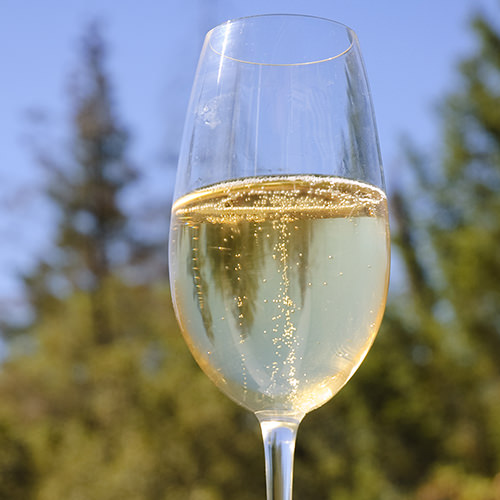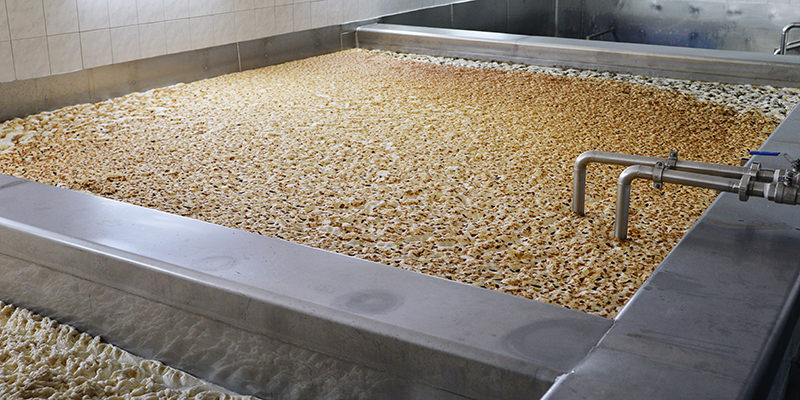Today, an ever-expanding mass of conscientious consumers supports a renaissance of artisan food and beverage makers. At the same time, a religious devotion to science and expectation of uniformity in consumer goods continues to make small scale production nearly futile. At the core of this tension is Saccharomyces Cerevisiae, otherwise known as Baker’s or Brewer’s yeast, a single-celled organism responsible for getting people drunk for over 2000 years.
Cerevisiae exists and has existed in the air around us for eons, and though it takes a microscope to examine individual strains (of which their are over 1500), these yeasts can be seen in most grocery stores as the white film that covers unwashed, organic produce like grapes and apples. These floating microbes eventually land on sugary fruit, and naturally begin to ferment their sugars once the fruit has either been picked and pressed or falls and breaks open on the ground. Simple, spontaneous fermentations like these are what created the culture of drinking alcoholic beverages as early as the Mesopotamian era.
The process of natural fermentation by yeast is shockingly simple: yeasts munch on sugar and release CO2 and alcohol as byproducts. The CO2 released is what makes beer or Champagne bubbly, and gives bread its signature holes. A combination of enzymes present during fermentation–amylase in flour, malt compounds in beer making, polyphenols in red grapes–and the exact strain of S. Cerevisiae present, gives each bread or brew its unique and distinctive flavor.
San Francisco Sourdough breads, for example, come from a unique strain of yeast first discovered in the foggy city in the 1800s. Similarly the Flor, or film of yeast that settles on top of Spain’s most famous Sherries is native to Jerez.
Some brewers, bakers, and winemakers still use this simple method, known as “native yeast fermentation,” to make their brews. In fact, this growing tribe of artisans claim that native yeasts produce better, more natural products despite being delicate, unpredictable, and often slow fermenters.
“Natural yeast must be nurtured and cared for. This TLC makes a world of difference in not just flavor, but nutritional value,” says sourdough enthusiast and baker Bram Yoffie. “The longer fermentation combined with the fact that you are adding to your dough a flour/water mixture with an already active set of enzymes, aids in kickstarting the processes of fermentation in one’s loaf and creates a basis for your flavors.”
Yoffie’s sentiments are echoed by hordes of winemakers who argue similarly that native yeasts–which vary on the microscopic level based on factors like ambient temperature, humidity, and microflora–are the only yeast that don’t strip wine of unique terroir.
From the other end of the spectrum comes Super Cerevisiae, otherwise known as cultured yeasts. These yeasts are born and bred in labs to display specific characteristics–not unlike breeding designer dogs. And like hypoallergenic Labradoodles, cultured yeasts can be pretty cool.

Champagne yeast, for example, is cultivated to produce more bubbles than other types of S. Cerevisiae, while certain strains can survive in highly alcoholic solutions (like that 17% ABV Zinfandel). Recently The New York Times highlighted how grocery store yeasts can even produce opioids when fed the right stuff.
More importantly, yeast science allows winemakers direct and precise control over fermentation. Making wine in a chilly region? There’s a yeast that can ferment sugars quickly in cold temperatures. Concerned about bacteria ruining a brew? There’s a yeast for that. Want Starbucks-level uniformity from vintage to vintage? Simply buy the same yeast–exactly the same yeast, down to its DNA.
Cerevisae reproduces asexually, so replicating cultured yeast strains produces DNA replicas, meaning bottles of Two Buck Chuck or Veuve Clicquot will taste nearly identical from year to year. Plus, manufactured yeast can live dormant for years, and be woken up with a simple splash of warm water whenever fermentation is required.
All this control makes yeast science a big business, especially where beverage makers are concerned. Proponents of laboratory yeasts, like the Wonderbread corporation and most large wineries, argue that using natural yeast makes creating a stable product impossible, and can even be dangerous since myriad bacteria are alive on freshly harvested grapes.
Cultured yeasts guarantee uniformity and stability in contrast to mysterious, invisible native yeasts, with both variants transforming simple sugars into God-like elixirs. Even if you think one side deserves the guillotine, without S. Cerevisiae their simply wouldn’t be a drop to drink.

